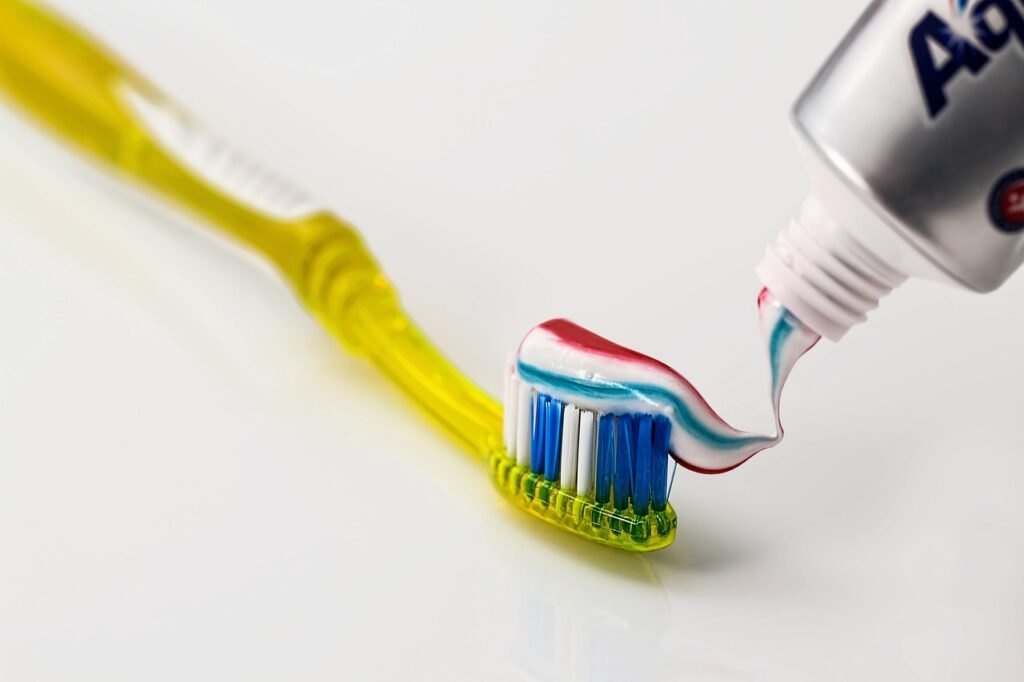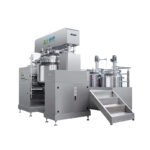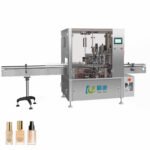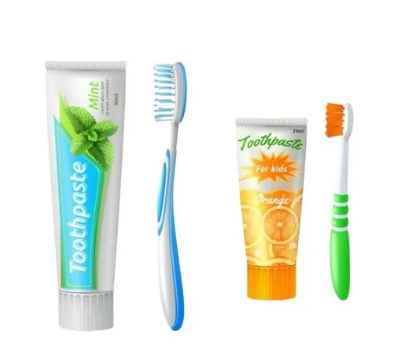
Suppliers and manufacturers of consumer packaged goods have long shared a common goal: developing more recyclable materials to replace those once considered non-recyclable. Among these challenges are multilayer flexible films, wax-coated cartons, and especially aluminum-laminated toothpaste tubes, which have been notoriously difficult to recycle in the oral care industry.
Historical Development of Toothpaste Tube Materials
| Period | Tube Material | Characteristics | Issues/Limitations |
|---|---|---|---|
| Early 20th Century | Cadmium, Lead | Cheap, widely available | Hazardous, toxic |
| Mid 20th Century | Aluminum | Strong, flexible, excellent barrier | Expensive, hard to recycle |
| Modern Use | Plastic Laminates | Multiple polymer layers + thin aluminum barrier | Protects toothpaste but difficult to recycle |
Early toothpaste tubes contained hazardous elements such as cadmium and lead, posing serious health risks. These were later replaced by more costly aluminum tubes. While aluminum tubes provide excellent protection and flexibility, they significantly increase production costs. Today, metal tubes are still used, mostly by smaller brands, often with plastic caps for convenience.
Most toothpaste tubes now are made from plastic laminates, combining multiple polymer layers with a thin aluminum barrier. This barrier protects the toothpaste’s flavor and fluoride content from moisture and oxygen. However, the multi-layer design makes recycling extremely challenging.
Rise of Recyclable Toothpaste Tube Materials
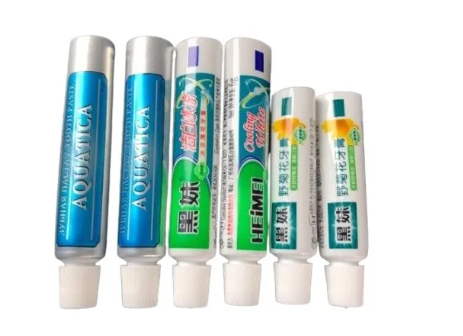
Traditionally, multi-layer aluminum tubes were non-recyclable, resulting in roughly 400 million tubes discarded annually in the U.S. alone, and approximately 1.5 billion worldwide. These unrecyclable tubes create about 100,000 tons of waste each year, highlighting a significant environmental concern.
Encouragingly, major manufacturers such as Colgate-Palmolive, GlaxoSmithKline (GSK), and Unilever have recently introduced toothpastes with curbside-recyclable tube designs, showing a clear industry shift toward sustainable packaging.
Plastic Tube Packaging: HDPE Toothpaste Tubes
The primary material for these recyclable tubes is High-Density Polyethylene (HDPE), with caps typically made from #5 polypropylene. HDPE tubes aim to reduce single-use plastic waste while maintaining product integrity.
Creating flexible, squeezable, recyclable HDPE tubes requires not only material innovation but also precise and reliable production equipment. This is where King-Pack filling and sealing machines play a critical role. Designed to handle flexible HDPE tubes efficiently, these machines ensure accurate dosing, secure closure, and high-speed production—maintaining hygiene and product quality while supporting eco-friendly packaging initiatives.
Innovations in Recyclable Toothpaste Tubes
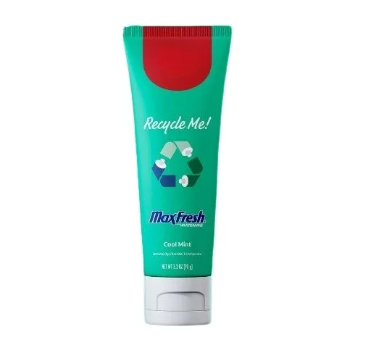
The Association of Plastic Recyclers recognizes the potential of fully recyclable toothpaste tubes to transform oral care packaging. Developed over several years, these tubes aim for full recyclability by 2025, promoting wider adoption of eco-friendly packaging.
Engineers have innovated ways to combine different HDPE grades and thicknesses, creating flexible tubes that maintain barrier protection, allow easy squeezing, and withstand high-speed manufacturing. Partnerships with recycling advocacy groups increase public awareness, provide funding, and encourage governments to improve recycling infrastructure.
Advantages of Plastic Toothpaste Tubes
| Feature | Aluminum Tubes | HDPE Plastic Tubes |
|---|---|---|
| Barrier Quality | Excellent (moisture, oxygen) | Good, with engineered HDPE layers |
| Cost | High | Lower, cost-effective |
| Recyclability | Limited | Widely recyclable (#2 plastic) |
| Flexibility | High | Improved with multi-grade HDPE |
| Sustainability | Low | High – supports circular economy |
Toothpaste packaging must protect the product, maintain hygiene, comply with regulations, and effectively communicate brand identity. HDPE (No. 2 plastic) offers a balance of strength and recyclability. By layering different HDPE grades, engineers have overcome rigidity limitations, producing flexible tubes that are easy to use and fully recyclable.
Through efficient manufacturing with King-Pack’s filling and sealing machines, producers can scale up eco-friendly tube production while reducing waste. These recyclable tubes can be transformed into new plastic products, contributing to a circular economy and supporting sustainability goals.
Summary
Aluminum tubes remain valued for their adaptability and superior protection, often preferred by premium toothpaste brands. Plastic tubes, especially HDPE, address green packaging demands by being lightweight, cost-effective, and recyclable. With the integration of advanced King-Pack filling and sealing machines, manufacturers can efficiently produce recyclable toothpaste tubes, meeting production, hygiene, and environmental standards. This combination of material innovation and precise machinery points to a greener, more sustainable future for oral care packaging.
FAQ – Toothpaste Tube Materials & Manufacturing
Q1: Why are aluminum-laminated tubes hard to recycle?
Because they combine multiple materials (plastic + aluminum), which are difficult to separate in recycling facilities.
Q2: What is the most sustainable toothpaste tube today?
HDPE plastic tubes, fully recyclable in standard #2 plastic streams.
Q3: How do King-Pack machines support sustainable packaging?
They enable efficient filling and sealing of recyclable HDPE tubes, ensuring high-quality production while reducing waste.
Q4: Are recyclable toothpaste tubes as durable as traditional ones?
Yes. Engineers developed HDPE layering techniques to preserve product integrity, prevent leakage, and allow user-friendly squeezing.

